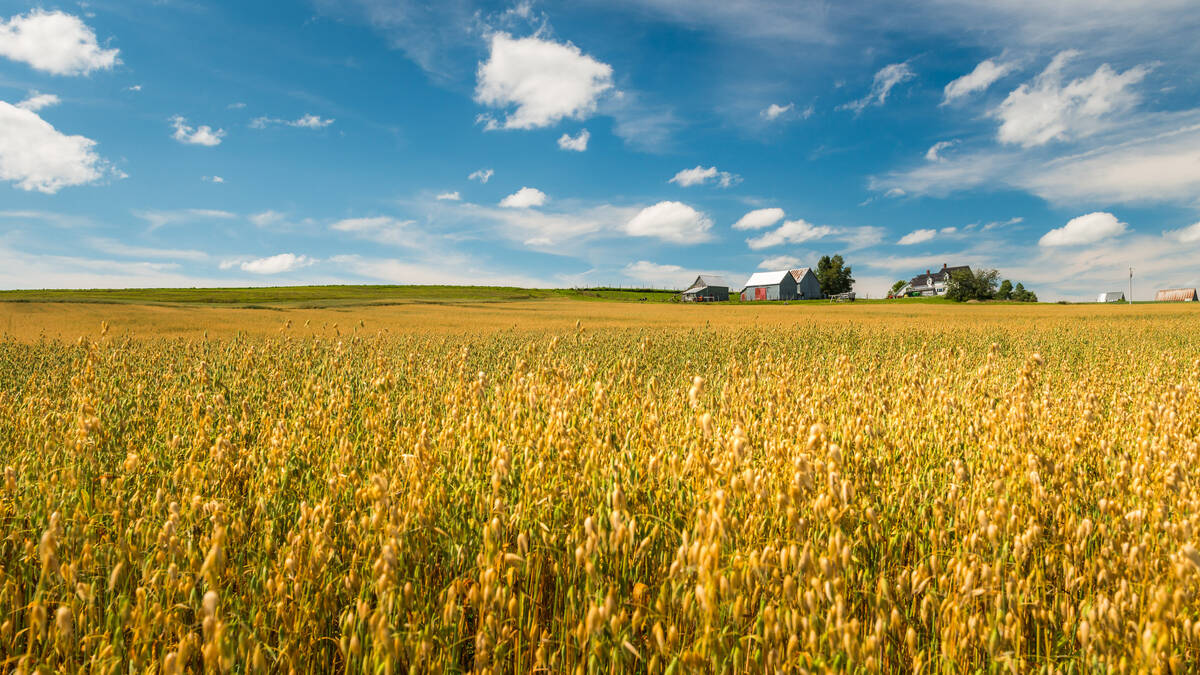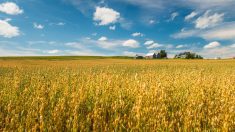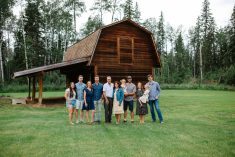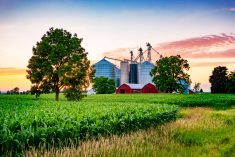milk is produced in Quebec, and poultry numbers are rising steadily.
The hard truth is that if you are a cash crop, hog, beef or lamb farmer, your balance sheet would look a lot better if you farmed in Quebec.
To look at just one comparison, MAPAQ (Quebec Ministry of Agriculture) statistics show that in 2007, direct government payouts (federal and provincial) represented 9.4 per cent of farm income in Quebec and 7.5 per cent in Ontario.
When egg, broiler, turkey and milk productions are taken out, the gap widens. Commodities that aren’t under supply management were subsidized by 15.1 per cent in Quebec and 10.3 per cent in Ontario.
Read Also

Risk management for the farm means considering people, too
Wheat fields in New Brunswick, Canada.
Quebec manages its own Farm Income Stabilization Insurance Program (ASRA), adding provincial funds to those it receives for opting out of the Canadian Agricultural Income Stabilization (CAIS) program.
About 90 per cent of farming activities in Quebec are either under supply management or covered by ASRA insurance, says Université Laval agri-economist Daniel-Mercier Gouin. “This gives a strong stability to Quebec agriculture.”
Why are agriculture budgets higher in Quebec? “Because we love our agriculture a lot more!” says Gouin as he turns to the history of farming in the province.
From the British Conquest of 1759 to the Quiet Revolution of the ’60s, rural Quebec has been the holdout of the French-Canadian nation and its Catholic religion, Gouin explains. Farming was a way of life whose historical and symbolic importance for the survival of the French language and Catholicism was not altered by early industrialization and urbanization.
The powerful clergy also worked for farmers. The UCC (Catholic Farmers’ Union) was founded in 1924 and was naturally viewed as the representative of all Quebec farmers. The UCC’s historical legitimacy was enshrined in a law in 1972, when it became the UPA.
Still today, the UPA enjoys a union monopoly in Quebec, with all farmers having the obligation to pay membership fees. Members are part of regional unions and each type of farm has its own federation, all under the UPA umbrella.
This model is unique in Canada and there is nothing like it anywhere else in the world, Lacasse says.
The UPA’s monopoly was questioned by the Pronovost Commission, a recent thorough examination of Quebec agriculture. Lacasse says farmers still prefer having one strong union, with power to influence public policy. “Whatever government we have,” Lacasse says, “it doesn’t have a choice but to listen.”
In fact, some will say agriculture policy in Quebec is drafted by the UPA. All major laws, including those that authorize joint marketing plans, were brought forward by the UPA, Lacasse reckons. “We meet with our members to agree on what would be the best policies. When we reach a consensus, we can then lobby very efficiently.”
Quebec agriculture policy is also based on a search for food self-sufficiency that stems from the 1970s, when food prices rose and Quebec independence movements were gaining momentum, Gouin adds.
Today, the UPA is a strong advocate of food sovereignty, a concept it uses to defend supply management in Ottawa and at all WTO meetings.
Lacasse’s Quebec model of agriculture also includes a strong partnership with governments, a bias for human-scale family-run farms and a focus on “feeding our people first.”
The UPA contends that Quebec farmers do not receive significantly higher subsidies than other Canadian farmers. It is Lacasse’s view that provincial funding numbers must be given a careful look, because Quebec programs include federal money.
Governments altogether should support agriculture even more, Lacasse says. “Canadian agriculture policy is not at all competitive with the U. S. Farm Bill. Federal support programs are insufficient and this is why Quebec is adding some of its own money.”
The Pronovost Commission’s report argues that generous government programs have masked market signals and undermined Quebec farmers’ competitiveness.
Lacasse does not buy into that argument. Farmers must meet strict efficiency criteria in order to qualify for income stabilization insurance payments, he says. In his opinion, if Quebec farmers have higher debt loads, it’s because they are younger and eager at investing and expanding.
There are, however, fundamental problems with the ASRA, Gouin points out. When farmers and their bankers base their decisions on income insurance thresholds rather than market prices, as is the case for lamb and calves, something has gone wrong.
The ASRA’s chronic deficit is also cause for concern. Gouin predicts that with the 2007-08 deficit of about $300 million, the accumulated deficit will reach $800 million.
There may be controversy about the ASRA, but a wide consensus remains in Quebec. Quebec voters support agriculture in order to sustain the economy of its regions, to ensure food quality and safety, and critically, for the sake of cultural identity. CG














